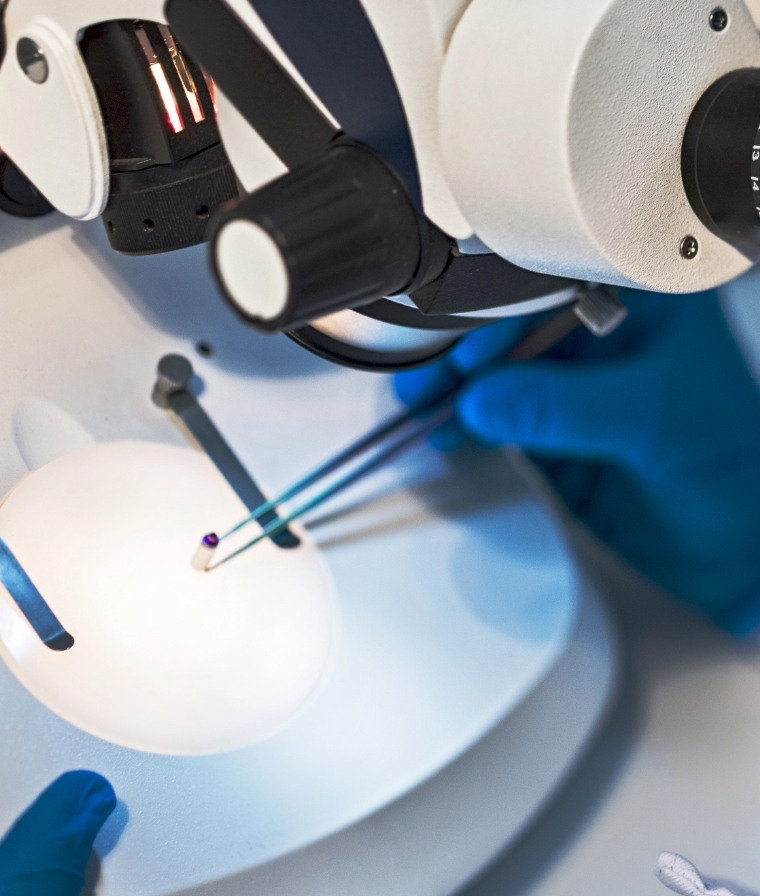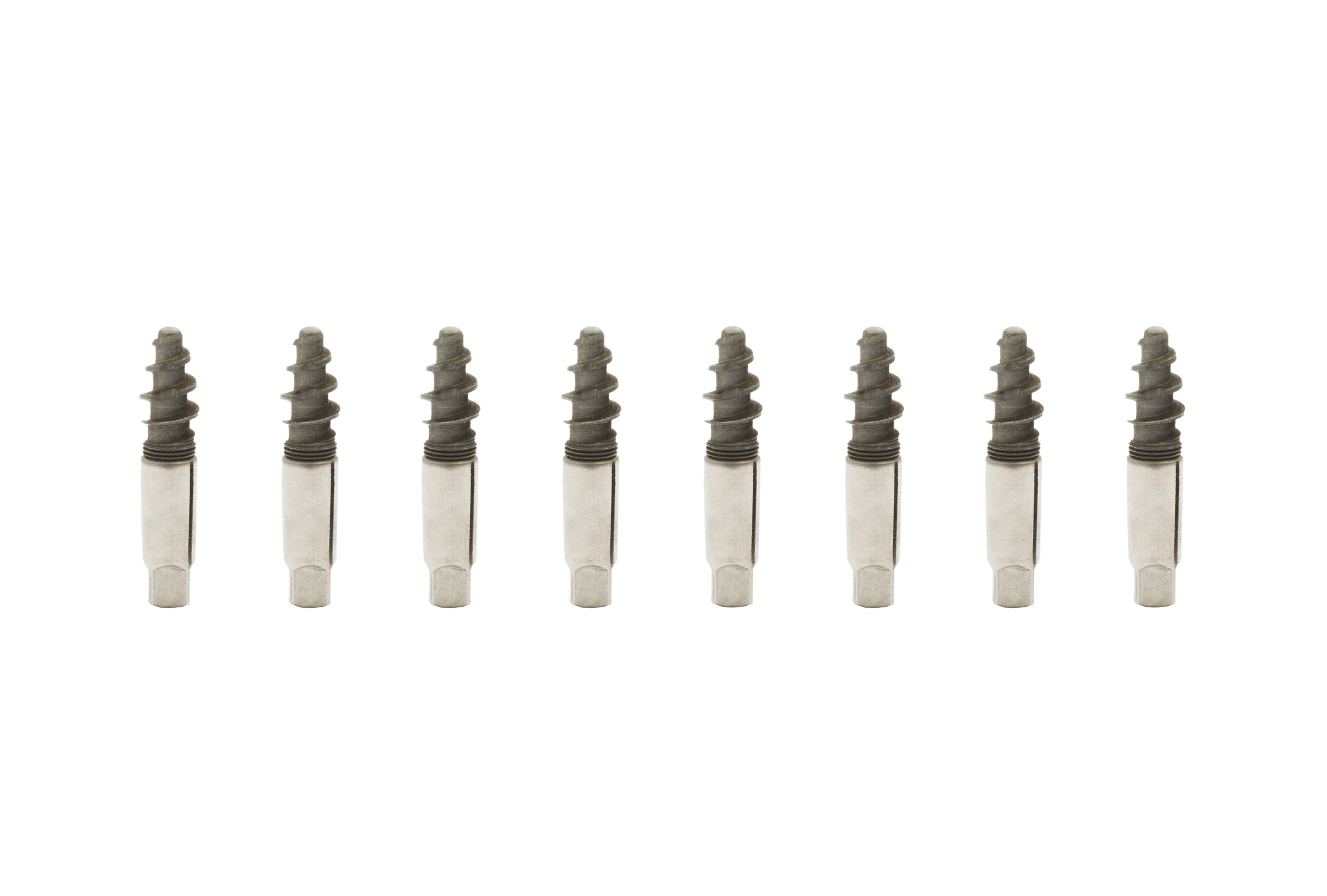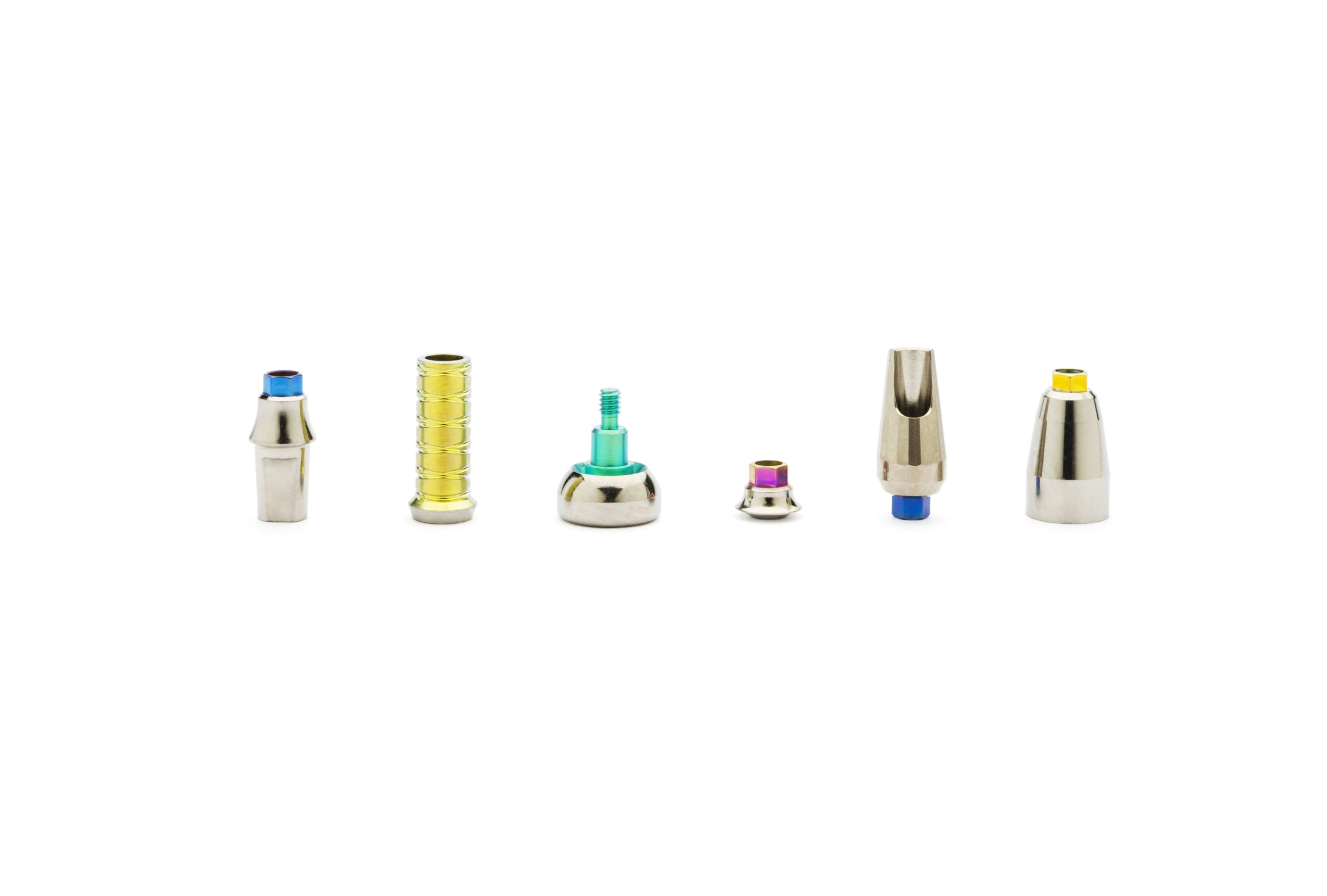Eaglegrid, in collaboration with Newancorvis and Alticolor, subsidised a PhD with the Department of General Pathology at the University of Pisa to study in vitro cultures of human gingival fibroblasts placed in contact with titanium discs with surfaces specially treated by Alticolor.
In the latest generation of dental implantology, titanium has been used extensively for the production of root form implants, i.e. for endosseous implants that have a cylindrical/conical shape simulating tooth roots.
Such implants are produced by milling grade 4 or 5 titanium bars (removal procedure). These are titanium alloys that are well suited to the production of fixtures, with diameters, lengths and prosthetic insertions to be machined using high-precision CNC lathes. This type of implantology is used when there is a sufficient amount of residual bone in both width and depth. In cases of severe atrophy one must resort to bone regeneration techniques, which today are less popular in the dental market, or opt to employ alternative implant techniques that solve the patient's clinical condition through another approach.
Eaglegrid is a leading Italian company in subperiosteal implantology. A new design and protocol was developed to solve the problems that encumbered the old sub-periosteal implant of the past by generating a customised implant using a fully digital flow. Today, Eaglegrid and its partners are building a new type of implantology using the laser melting method (“additive manufacturing”) whereby a high-intensity laser beam sinters grade 5 titanium molecules layer by layer until 3D shapes are created. This revolutionised the dental implantology market, paving the way for other avenues of treatment in cases of severe atrophy. Subperiosteal implantology works on the surface instead of at depth, whereby a metal implant framework rests directly on top of the bone and provides attachment posts, which extend through the tissue for prosthesis anchorage.
What was missing was a study of the tissues’ response to titanium produced using laser melting. In the bibliography there are hundreds of articles on the bio-compatibility of titanium with gingival bone tissue, but there are no works on the bio-compatibility of titanium obtained by laser melting for implant purposes. Hence the need to perform “in vitro” tests on the response of human gingival fibroblasts placed in contact with titanium surfaces obtained via laser melting.
Eaglegrid, in collaboration with Newancorvis for the production of titanium via laser melting and with Alticolor for the surface treatments, subsidised a PhD with the Department of General Pathology at the University of Pisa to study in vitro cultures of human gingival fibroblasts placed in contact with titanium discs with surfaces specially treated by Alticolor. For the study, Alticolor was asked to treat the surfaces of 1 cm titanium discs in five different ways.


